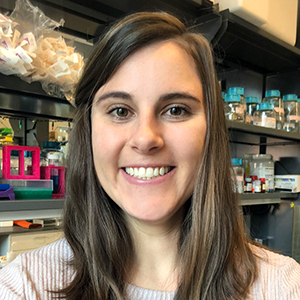Bacterial invasion may explain recurrent urinary tract infections
Urinary tract infections, better known as UTIs, are the most common bacterial infection in women of all ages, and an estimated 50% of women will experience a UTI at least once during their lives.
Postmenopausal women are especially susceptible and many suffer from repeated infections. Recent research suggests that this recurrence may partially be explained by where the infecting bacteria go — namely, into the walls of the bladder.

Kim Orth, a professor at the University of Texas Southwestern Medical Center, and Nicole DeNisco, an assistant professor at the University of Texas, Dallas, along with colleagues at UT Southwestern found bacteria in bladder-wall biopsy samples of postmenopausal women. The presence of these bacteria within the tissue seemed to initiate local adaptive immune responses, which may contribute to the pathology of recurrent UTIs, or RUTIs.
Orth and DeNisco partnered with urologist Philippe Zimmern to study the host-pathogen interactions involved in RUTI using urine from postmenopausal women as well as the bladder-wall samples. They expected to find bacterial species associated with bladder and urinary tract infections, such as Escherichia coli. Instead, they saw that more diverse species of bacteria were able to invade the bladder’s surface, which is called the urothelium.
“These results were very surprising as we expected to see E. coli associated with all of the patients,” Orth said. “Instead, we found a number of different types of bacteria that correlated with diseased tissue.”
When they examined and analyzed the tissue further, the research team found both swelling and an increased presence of antibody-secreting B-cell lymphocytes, a key component of the adaptive immune response; normally, in the absence of infection, antibody-secreting B-cell lymphocytes are at low levels. Scientists long have thought that this response may contribute to RUTI; these findings support that theory and provide better insight into the disease mechanism.
Women with RUTIs spend billions of dollars annually on medical care, and the pain and discomfort associated with the infection can lead to reduced quality of life. Anti- biotics are the standard prescribed treatment, but doctors are seeing a rise in antibiotic-resistant RUTIs, which are especially difficult to treat. Yet research on the underlying cause can be challenging. Most studies are done on mice, which have limited lifespans and don’t accurately represent postmenopausal women. Orth, DeNisco and Zimmern’s study of postmenopausal patient samples is, therefore, important.
“Solid data about what causes the disease from patients that have RUTI, rather than making assumptions, is in itself a major breakthrough,” Orth said.
Future research can build on Orth, DeNisco and Zimmern’s findings to learn how different treatments affect RUTIs both for patient outcome and at the molecular level at the site of infection itself. They have planned future studies on how to remove the invading bacteria from the bladder and target the local immune response effectively. The results could help guide medical treatment plans to reduce the recurrence of UTIs in postmenopausal women.
Enjoy reading ASBMB Today?
Become a member to receive the print edition monthly and the digital edition weekly.
Learn moreGet the latest from ASBMB Today
Enter your email address, and we’ll send you a weekly email with recent articles, interviews and more.
Latest in Science
Science highlights or most popular articles

Decoding microglial language
Emory University scientists characterize extracellular vesicles that facilitate intercellular communication.

What is metabolism
A biochemist explains how different people convert energy differently – and why that matters for your health.

What’s next in the Ozempic era
Diabetes, weight loss and now heart health: A new family of drugs is changing the way scientists are thinking about obesity — and more uses are on the horizon.

How a gene spurs tooth development
University of Iowa researchers find a clue in a rare genetic disorder’s missing chromosome.

New class of antimicrobials discovered in soil bacteria
Scientists have mined Streptomyces for antibiotics for nearly a century, but the newly identified umbrella toxin escaped notice.

New study finds potential targets at chromosome ends for degenerative disease prevention
UC Santa Cruz inventors of nanopore sequencing hail innovative use of their revolutionary genetic-reading technique.

